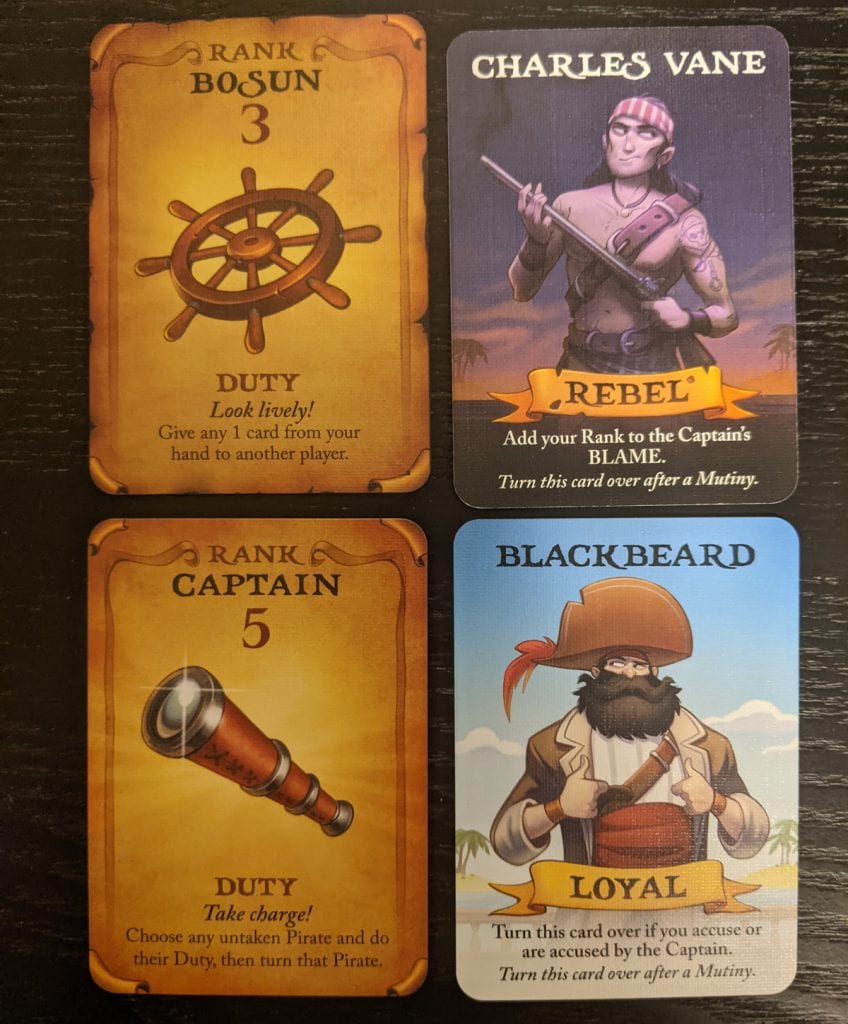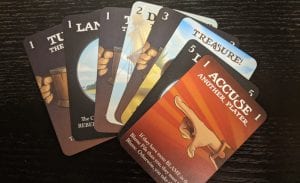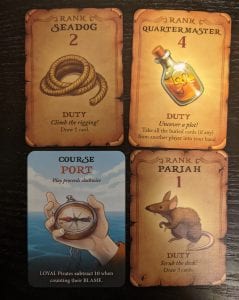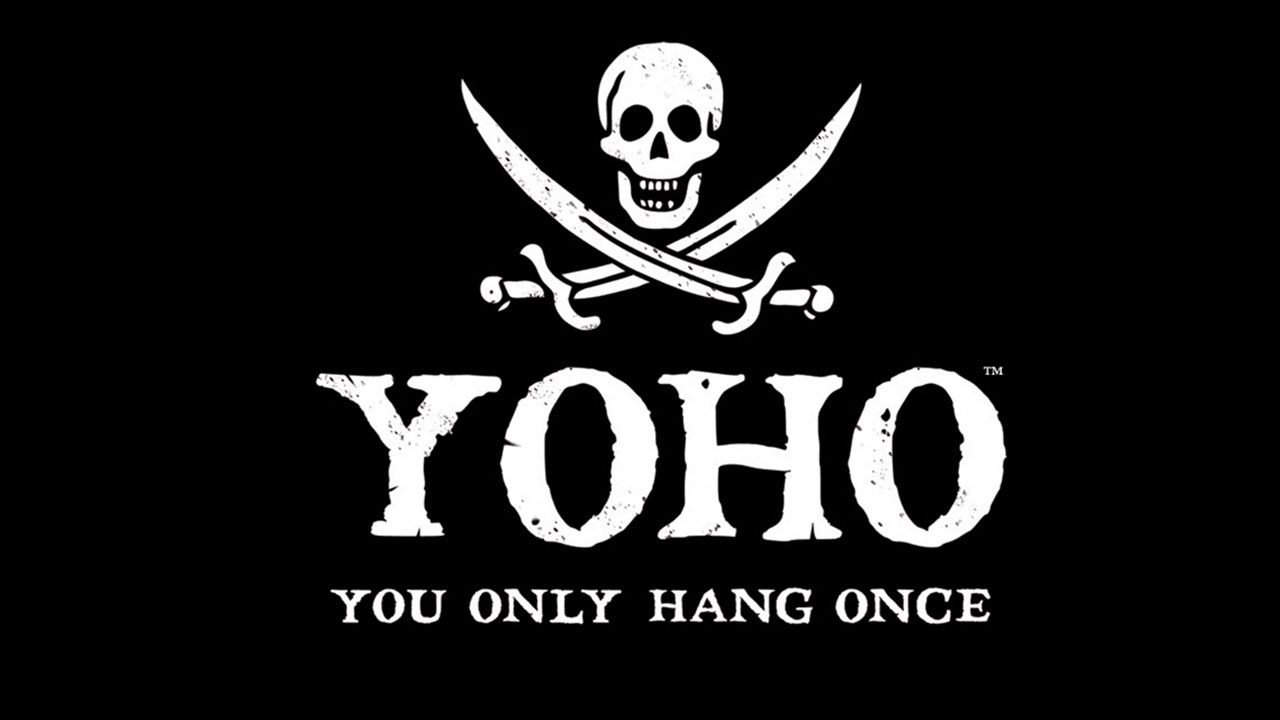Disclosure: Meeple Mountain received a free copy of this product in exchange for an honest, unbiased review. This review is not intended to be an endorsement.
You can do anything with pirates. It doesn’t matter what the genre or type of mechanisms are in a board game, you can throw pirates in there, and it would make sense. Open-ended sandbox game? Merchants and Marauders. Miniatures skirmish? Blood and Plunder. Card game? Port Royal. Trick taking? Skull King.
There is one under-used aspect of the pirate theme: Drama. At the end of the day, pirates are bandits of the sea. These are people who want to get richer and are willing to use brutal means to obtain what they desire. If you force a crowd onto a boat, one person’s desire for more can create big problems. That’s the story of today’s game.

Like any other pirate game, this one involves treasure. It’s missing, and nobody is talking. The Captain is pointing his finger at the Pariah because all has gone wrong since he arrived. The Quartermaster is gradually turning the crew against the Captain, whereas the Seadog just… buried something? Hmm…
The Blame Game
That’s the general idea of this game. At the start, there will be a Captain who assigns every other players’ numbered rank. Assuming you are playing a four-player game, you will use four of the five pirate cards, with the fifth pirate card being in the middle of the table as a bystander. Each player gets a hand of cards, and one card will be flipped face up to begin the “Blame” pile.
Your turn is straightforward: Draw your cards, play a card on the Blame pile, and do what it says. Most of these actions revolve around the basics such as switching ranks, swapping hands, or altering the turn order. Your only condition is you cannot play a card that has the same text. The numbers on the corner of each card do not count.
So what do those numbers mean? They represent everyone’s numbered rank. When someone plays the blood-red Accuse card against you, the entire Blame pile is examined. Each card that matches your rank is part of your Blame. If you have more Blame than the accusing player, you add the pile to your hand. If the accuser has more Blame, they get the pile.

This should be avoided, as at the end of the game, whoever has the highest Blame has to walk the plank. You count the cards in your hand, similar to going through the “blame pile” to find out who gets to go to Davey Jones’ infamous locker. After watching the unfortunate soul take an eternal salt bath, whoever buried the Treasure card via the “Land Ho” card is the winner. If that didn’t happen, the highest-ranked player wins.
Based on that information, this appears to be a memory game since the cards in the Blame pile have to be remembered, right? Nope. The ranked cards are not balanced at all. The lower your rank, the more cards can be found at that rank. If you are stuck in the rank 1 Pariah role, getting out as soon as possible is a must to avoid successful accusations.
The Immortal Captain?
Which spills into a problem: The Captain. Since the Captain is the highest rank, they have the least cards in the deck, so how do you successfully pull off a mutiny? When the Captain is accused, the rules are a little different. Every pirate card has a Loyal and Rebel side that’s flipped through card play. When a Captain is accused, all rank 5 cards are involved, plus all other ranks of every single Rebel pirate. The only saving grace the Captain has is the Course Card. This card acts as an active player marker, and while it is on the Port side, gives the Captain an advantage. If the mutiny succeeds, the old Captain is now the Pariah, and the highest-ranked player becomes the new Captain.
It’s quite clear there is an ecosystem at play here. Usually, in these kinds of card games, everyone wants to shoot the top dog. The issue here is there is very little value in helping out since most people on the ship won’t be the Captain if there’s a mutiny. Those at the very bottom of the pecking order want to get out since they can potentially get the blame, thus they walk the plank. The Captain is playing whack-a-mole to keep everyone loyal, while the second tier crew members are trying to time everything right to ignite the powder keg. There’s also that treasure card that might have been buried face down.
What we have here is a bit of drama. Alliances will form and break within minutes while accusations fly across the ship like a ping pong tournament. At the end of it all, a body will result from the crew members pushing each other off this unstable social ladder. After writing this, it feels like I am describing a Thanksgiving dinner rather than a pirate ship.

A Leaky Sea Vessel
While this sounds like an exciting situation to be in, unfortunately, that’s the only thing going on. Every game has the same structure, with the only variation being the order in which the cards are played. The Captain worries about loyalty, the Quartermaster wants to start a mutiny, and the Pariah wants out of the crab bucket.
Because of this strict system, it’s a game that won’t cater to the capital G gamer crowd. Gamers don’t mind light games as long as the choices they make aren’t clear cut. Playing one card and following its instructions doesn’t warrant that type of decision space.
As a family game, it’s decent. It’s certainly a grade above many mainstream family card games that are often pumped out by companies like Mattel and Hasbro.
This appears like I am trashing the game, but there is light at the end of this tunnel. At its price point, it’s quite fair. The linen finish can withstand some abuse, and it’s sporting some gorgeous artwork. I would go so far as to say that I think this artwork wasn’t due to commission but blackmail. It’s simply too good.
Another thing I want to point out is the tuck box. It sounds bizarre to bring it up, but using a tuck box that’s small enough to fit into my leather jacket pocket feels like a novelty buried underneath the sands of time. Nearly every modern game out there likes to be loud with their production, and it’s nice to see a game go with the functional route.
Even though it is not perfect, I find this one to be enjoyable on occasion. It manages to devise a system that makes every player have their own priorities that interfere with everything else while still maintaining the concept of screwing over the leader. It is fascinating to watch this tiny little society stuck in the middle of the ocean rip each other apart for 20 to 30 minutes. It is not a game I want to play back to back, but I have to respect its boldness, even if the execution is not as crisp as it could be.
You can purchase a copy of YOHO! at Amazon.com











So um do you kill people in this game??
I um do not know how to say your name how do I say your name